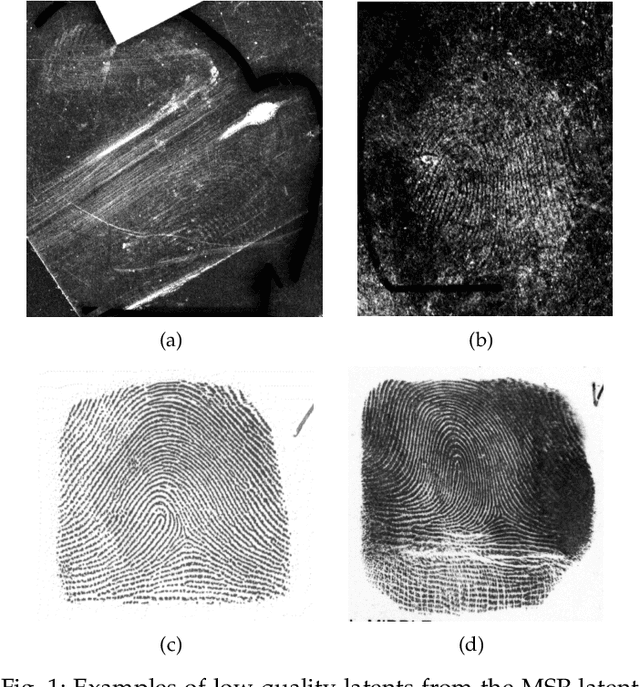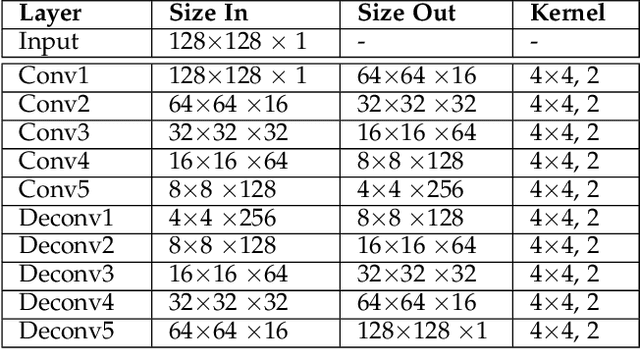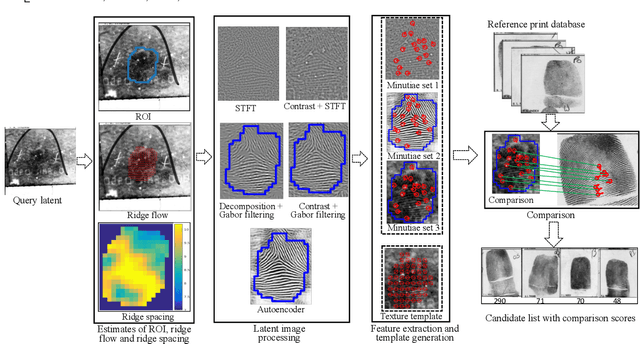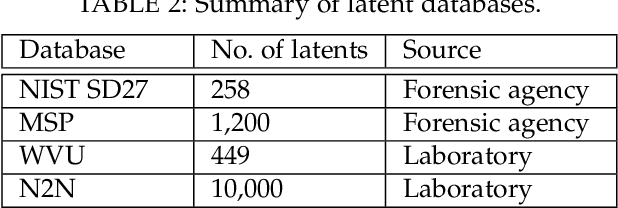End-to-End Latent Fingerprint Search
Paper and Code
Dec 26, 2018



Latent fingerprints are one of the most important and widely used sources of evidence in law enforcement and forensic agencies. Yet the performance of the state-of-the-art latent recognition systems is far from satisfactory, and they often require manual markups to boost the latent search performance. Further, the COTS systems are proprietary and do not output the true comparison scores between a latent and reference prints to conduct quantitative evidential analysis. We present an end-to-end latent fingerprint search system, including automated region of interest (ROI) cropping, latent image preprocessing, feature extraction, feature comparison , and outputs a candidate list. Two separate minutiae extraction models provide complementary minutiae templates. To compensate for the small number of minutiae in small area and poor quality latents, a virtual minutiae set is generated to construct a texture template. A 96-dimensional descriptor is extracted for each minutia from its neighborhood. For computational efficiency, the descriptor length for virtual minutiae is further reduced to 16 using product quantization. Our end-to-end system is evaluated on three latent databases: NIST SD27 (258 latents); MSP (1,200 latents), WVU (449 latents) and N2N (10,000 latents) against a background set of 100K rolled prints, which includes the true rolled mates of the latents with rank-1 retrieval rates of 65.7%, 69.4%, 65.5%, and 7.6% respectively. A multi-core solution implemented on 24 cores obtains 1ms per latent to rolled comparison.
 Add to Chrome
Add to Chrome Add to Firefox
Add to Firefox Add to Edge
Add to Edge